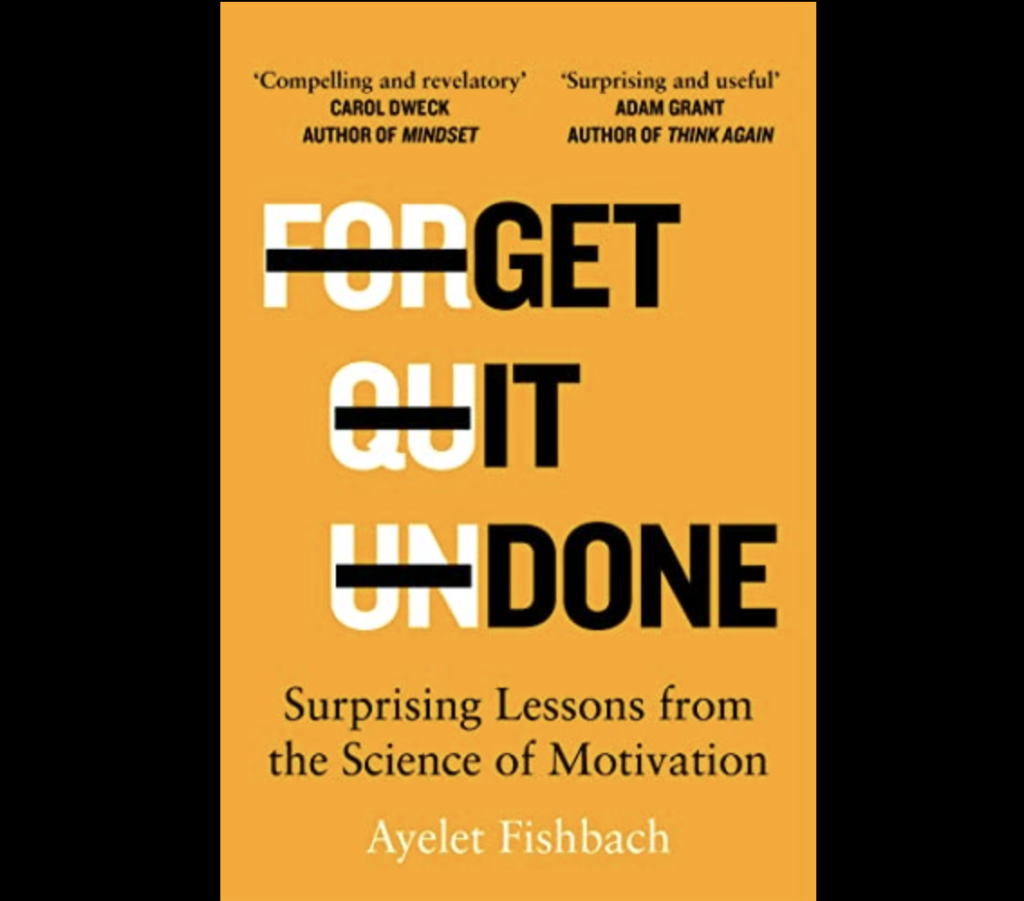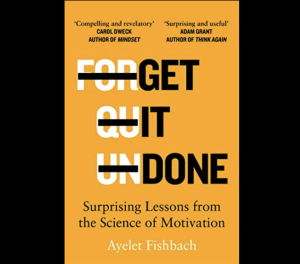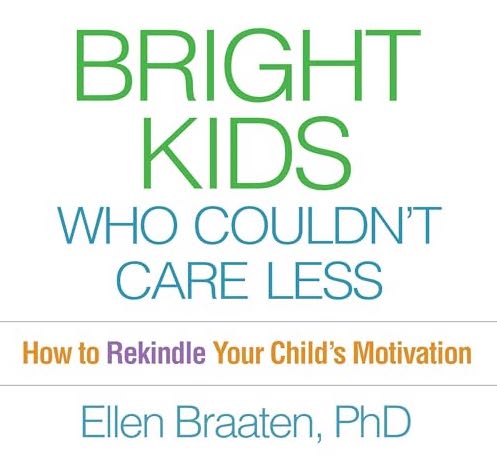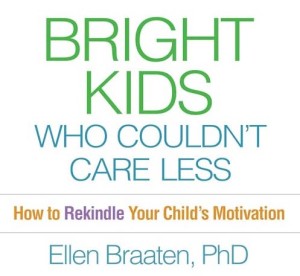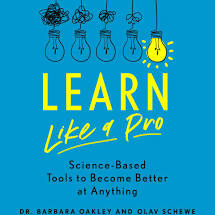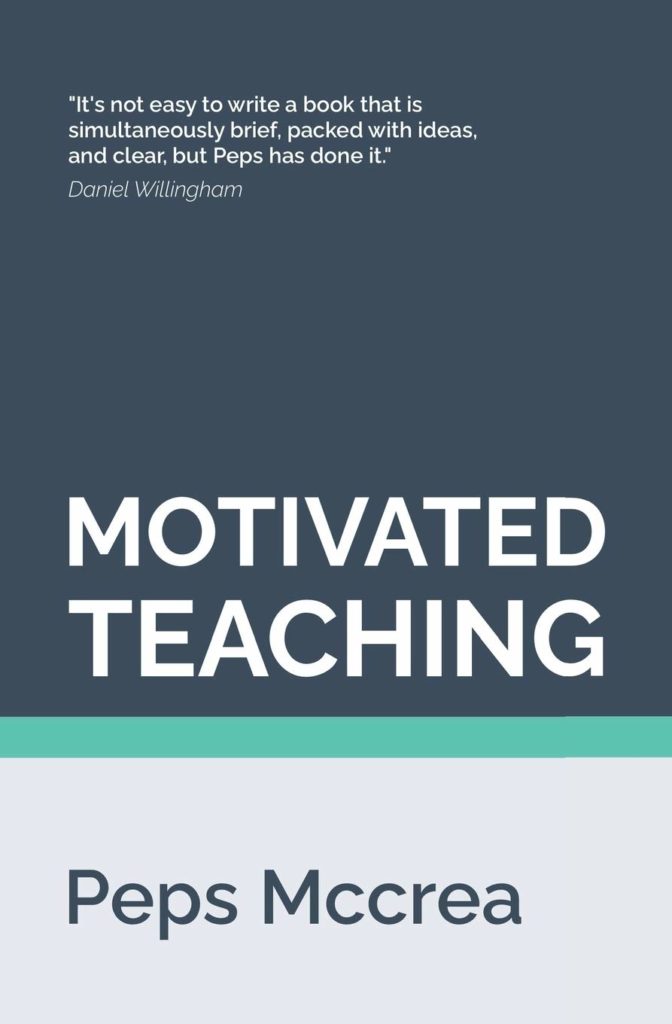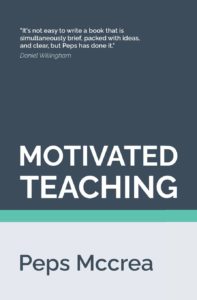Motivation has been a HOT TOPIC this year in all the schools I’ve visited. Everywhere I go, I get questions about students’ apathy and indifference, and teachers’ frustration.
So, what can schools and teachers do?
Well, Self-Determination Theory offers a framework to answer that pressing question.
In this post, I’m going to introduce the theory — with a focus on its key concepts.
And then I’ll describe a study which helpfully reveals the complexity of enacting the theory wisely.
And, yes, as this post’s title suggests, that helpful study focuses on goals and feedback as motivational strategies.
Let’s see what researchers have discovered about the motivational benefits of goals and feedback.
Introducing Self-Determination Theory
Like many theories, self-determination theory (SDT) can be easily caricatured. Here’s the caricature:
- Extrinsic motivation BAD!
- Intrinsic motivation GOOD!!
These six words fall short in lots of ways, starting with this startling observation. SDT doesn’t contrast intrinsic and extrinsic motivation.
Instead, it defines six (yes, SIX) different motivational states — including four (yes, FOUR) different kinds of extrinsic motivation.
Here’s the kicker:
- Unsurprisingly, intrinsic motivation is GOOD for learning.
- Surprisingly, two flavors of extrinsic motivation are ALSO good for learning. (The other two flavors: not so much.)
The scholars who created the theory — Deci and Ryan — have a name for “good flavors of extrinsic motivation”; they call them “autonomous extrinsic motivation.”
At the top of this blog post, I asked: what can teachers do about apathetic students? Deci and Ryan answer: “foster the good kinds of motivation.”
Let’s Get Fostering!
Okay, if “the good kinds of motivation” can help, how do we teachers conjure them?
If I’m understanding SDT correctly, it includes bad news and good news.
- Bad news: we really can’t create intrinsic motivation (as Deci and Ryan define it).
- Good news: we really CAN create autonomous extrinsic motivation, which — as you recall — benefits learning.
We foster this good extrinsic motivation by focusing on three internal experiences: autonomy, relatedness, and competence.
That is: the more that my students feel in control (“autonomous”), close to one another (“related”), and effective at dealing with their environment (“competent”), the more autonous extrinsic motivation they will experience. And: the more they will learn.
The obvious implication of this theory, then: let’s focus on enhancing our students’ autonomy, relatedness, and competence.
Plausible Start
When I talk with teachers about this theory, they can easily start to brainstorm suggestions for creating autonomy, relatedness, and competence — and, presumably, the good kind of extrinsic motivation.
As a thought experiment, we can easily imagine that clear goals will have those results. And, while we’re at it, we might predict that process feedback will likewise.
But let’s go beyond a thought experiment. Let’s have an experiment experiment — with students and data and calculations and all that good stuff.
What happens?
Happily, a research team in the Netherlands wanted to know. They ran a survey study with almost 600 students — aged 11 to 18 — in PE classes.
They asked two sets of questions.
First: did the teachers clarify the goals during class? That is, did they…
- … tell the students what they were going to learn, or
- … how they would be evaluated?
Likewise, did they offer process feedback? That is, did they …
- … encourage reflection on how to improve, or
- … discuss how to use the students’ strengths?
And so forth.
Second: they asked if the students experienced greater autonomy, relatedness, and/or competence.
To be thorough, they also asked if they experienced LESS autonomy, relatedness, and/or competence.
Once they crunched all the numbers, what did this research team find?
Not Surprising, or Surprising?
From one perspective, this study seems to be asking rather obvious questions. I mean: OF COURSE students will feel more autonomous if we tell them what the goals are, or more related if we give them feedback.
What other result would we expect?
Here’s the thing: in the world of research, we don’t just assume; we measure. And, sure enough, those measurements gave us the results we (probably) expected.
Yes: clear goals enhance autonomy, relatedness, and competence.
And yes: process feedback does too.
At the same time, the number crunching also provided surprising results.
In some cases, process feedback reduced two of those classroom experiences: “relatedness” and “competence.”
While this result might seem surprising at first, I think it’s easy to understand the chain of emotional events here.
If I give my students lots of feedback, they might feel like I’m hovering or pestering or interfering.
Of course, “hovering, pestering, and interfering” could quite easily reduce the quality of the teacher/student relationship. And, they might also reduce my students’ feelings of competence.
In other words: all that feedback could suggest the students are not doing very well. And that feeling of incompetence could — in turn — reduce the quality of their relationship with the teacher.
Solving the Conundrum
So, which is it? Should teachers give students process feedback because it enhances autonomy, relatedness, and competence? Or, should we limit process feedback, because it reduces relatedness and competence?
As is so often the case, I think we answer that question by rethinking the relationship between research and classroom practice.
Research can almost never tell teachers what to do. Instead, research is awesome at helping us think about what we do.
In this case, our thought process might sound something like this:
- I want to create autonomous extrinsic motivation, so I should enhance my students’ sense of competence.
- [Thinking]
- I wonder if I can promote competence by giving them lots of feedback during today’s class.
- [more thinking]
- Now that I think about it, my feedback could enhance their sense of competence. But if I give too much feedback — or unwanted feedback — students could infer that I don’t have confidence in them.
- [even more thinking]
- So, I’ll put a note in my lesson plan to make time for feedback. But first, I need to think about the cues my students give me when the feedback is just too much…
Of course, those cues will look different depending on context.
- 2nd graders will give different cues than 7th graders.
- I suspect that — for cultural reasons — students in Japan signal frustration differently than those in New Zealand.
- Students react differently to the cool, with-it teacher than they do with me. (It’s been a minute since I was the cool, with-it teacher.)
And so forth.
But if I consider self-determination theory as a THOUGHT PROCESS, not a TO-DO LIST, I’m much likelier to get the results I want.
In this case: my feedback is likelier to enhance than reduce competence. It’s therefore likelier to promote autonomous extrinsic motivation.
And my students are likelier to learn.
Krijgsman, C., Mainhard, T., van Tartwijk, J., Borghouts, L., Vansteenkiste, M., Aelterman, N., & Haerens, L. (2019). Where to go and how to get there: Goal clarification, process feedback and students’ need satisfaction and frustration from lesson to lesson. Learning and Instruction, 61, 1-11.








